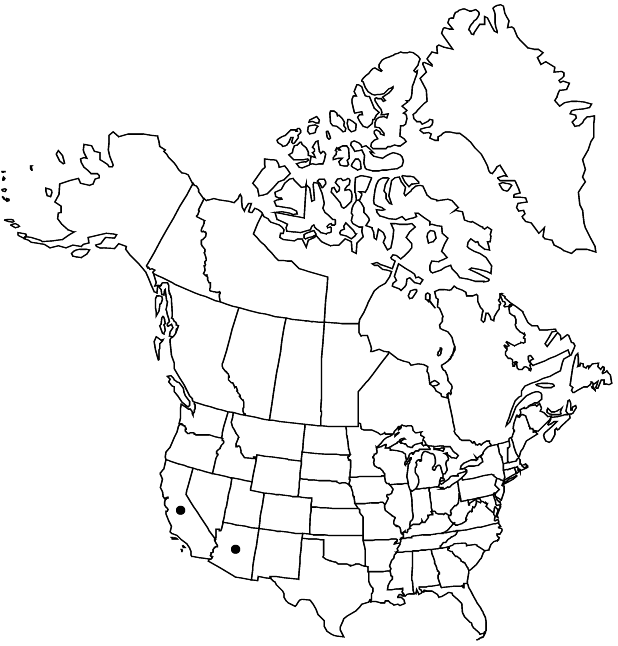Ribes quercetorum
Bull. Calif. Acad. Sci. 1: 83. 1885 ,.
Plants 0.6–1.5 m. Stems arched, spreading, puberulent; spines at nodes usually 1, 5–15 mm; prickles on internodes absent. Leaves: petiole 1–3 cm, puberulent, stipitate-glandular; blade roundish, deeply 3-lobed, cleft 1/2+ to midrib, sometimes with 2 shorter lobes proximally, 1–3 cm, base truncate to cordate, surfaces puberulent and stipitate-glandular, lobes cuneate, rounded, margins acutely 2–4-toothed, apex blunt-toothed. Inflorescences spreading, 2–3-flowered racemes, 1–1.5 cm, axis puberulent and glandular, flowers evenly spaced. Pedicels not jointed, 1–1.5 mm, densely puberulent and glandular; bracts broadly ovate, 1–1.5 mm, puberulent and glandular. Flowers: hypanthium yellow, tubular, 2–3 mm, puberulent; sepals not overlapping, reflexed, yellow, narrowly oblong, 3 mm; petals connivent, erect, white, narrowly obovate, not conspicuously revolute or inrolled, 1 mm; nectary disc not prominent; stamens slightly longer than petals; filaments linear, 1 mm, glabrous; anthers yellow, oval, 0.7–1 mm, apex with cup-shaped depression; ovary subglabrous; styles completely connate, 4.5 mm, glabrous. Berries palatable, black, globose, 7–8 mm, glabrous.
Phenology: Flowering Nov–May.
Habitat: Rocky slopes and canyon walls, dry slopes in woodlands
Elevation: 0-2500 m
Distribution

Ariz., Calif., Mexico (Baja California).
Discussion
Ribes quercetorum occurs in the foothills of the Sierra Nevada, the inner Coast Ranges south to the western Colorado Desert in California (and into Baja California), and the mountains of south-central Arizona.
Selected References
None.